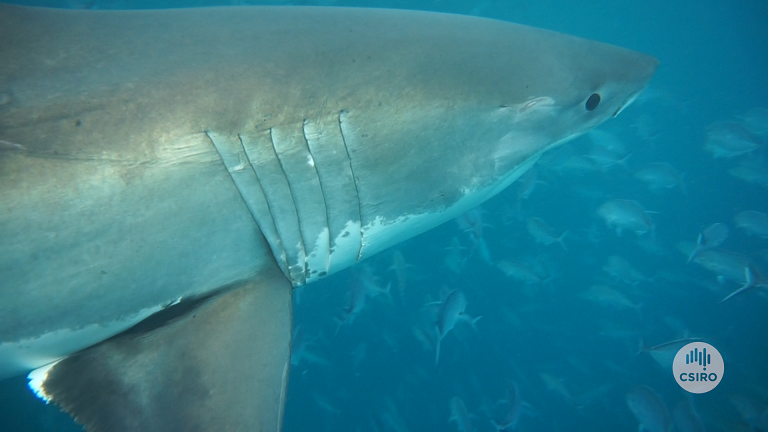 The new techniques are being used to reveal estimates of white shark numbers and compile key information including juvenile and adult survival rates, juvenile and adult abundance, and reproductive frequency. Population estimates and trends are needed to evaluate the success of Australia's white shark National Recovery Plan. They also provide a scientific basis for policies that strive to balance conservation and public safety.
The new techniques are being used to reveal estimates of white shark numbers and compile key information including juvenile and adult survival rates, juvenile and adult abundance, and reproductive frequency. Population estimates and trends are needed to evaluate the success of Australia's white shark National Recovery Plan. They also provide a scientific basis for policies that strive to balance conservation and public safety.
The techniques have been applied to research in eastern Australia. An estimate of the juvenile survival rate for the southern-western population is not yet known and requires an expanded tagging effort and associated data collection.
A national monitoring strategy will also be designed, enabling population estimates to be refined over time, and the work will contribute to the assessment of other conservation-dependent species.
The research is led by CSIRO and is funded by the Australian Government's National Environmental Science Program (NESP) Marine Biodiversity Hub.
This technique is also being applied to better understand populations of other species such as grey nurse sharks and river sharks, and to assist with conservation management.
As part of this work, CSIRO is collaborating with scientists from WA Fisheries, NSW Department of Primary Industries, University of Technology Sydney, Flinders University, South Australia Research and Development Institute and South Australia's Department of Environment and Water and Natural Resources.
The new techniques are being used to reveal estimates of white shark numbers and compile key information including juvenile and adult survival rates, juvenile and adult abundance, and reproductive frequency. Population estimates and trends are needed to evaluate the success of Australia's white shark National Recovery Plan. They also provide a scientific basis for policies that strive to balance conservation and public safety.
The techniques have been applied to research in eastern Australia. An estimate of the juvenile survival rate for the southern-western population is not yet known and requires an expanded tagging effort and associated data collection.
A national monitoring strategy will also be designed, enabling population estimates to be refined over time, and the work will contribute to the assessment of other conservation-dependent species.
The research is led by CSIRO and is funded by the Australian Government's National Environmental Science Program (NESP) Marine Biodiversity Hub.
This technique is also being applied to better understand populations of other species such as grey nurse sharks and river sharks, and to assist with conservation management.
As part of this work, CSIRO is collaborating with scientists from WA Fisheries, NSW Department of Primary Industries, University of Technology Sydney, Flinders University, South Australia Research and Development Institute and South Australia's Department of Environment and Water and Natural Resources.
